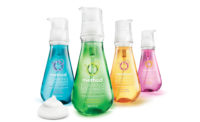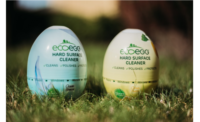Market Trends
A New Chapter for Household Packaging
In the age of e-commerce, it is a new supply chain requiring new thought.






It’s estimated that 95% of purchases will be made online by 2040. While household care brands have worked over the decades to build tight supply chains, in this new age of e-commerce, in-store packaging strategies can’t simply be replicated for e-commerce.
Damaged Products, Damaged Reputations
In the traditional brick-and-mortar environment, household products arrive in stores in corrugate boxes with dividers to prevent damage. And each shipper has been designed with a specific column strength to allow for stacking and efficient travel through the logistics network. Contrast this to how a consumer receives a package from an online retailer. Perhaps they get a bottle of detergent packed in a plastic bag, rattling around in a box with some air pillows to cushion the product.
Packaging needs to be much more robust to withstand several different shipping environments. “The majority of the current household products are not built to travel individually, but instead are designed only to be shipped in a palletized configuration, generally in an upright position,” said Shar Puskala, director of program management at Studio One Eleven, the design and innovation division of Berlin Packaging.
When products arrive leaking or damaged, there are implications far beyond returns and chargebacks, as negative reviews and low-star ratings can have a negative impact on sales. Amazon has enacted new regulations to ensure compliance and to optimize the overall customer experience by collaborating with manufacturers worldwide to invent sustainable packaging that delights customers, eliminates waste and ensures products arrive intact and undamaged. APASS is a network of packaging experts that have been certified by Amazon to help successfully navigate their new packaging regulations.
Design for Individual Shipping
Berlin Packaging is an APASS-certified network member, and Puskala notes there are plenty of package design improvements and considerations that can ensure smooth delivery in the e-commerce channel. For example, ratcheted closures and induction innerseals can be designed into the packaging process. Or for trigger sprayers, locking mechanisms can prevent dispensing while in transit, and anti-backoff designs can prevent the entire dispensing assembly from loosening. And for certain situations, it may be smart to have both a shipping closure and a dispensing closure, which the customer affixes upon receipt.
Another example is with plastic bottles; while more robust than glass for e-commerce, plastic bottles need the right structure to prevent paneling with air transit.
With any new package design, the key is testing. “Drop testing from various heights and other extreme scenarios must be included for any packaging to make sure it will survive this new supply chain,” said Puskala.
Challenge Provides Opportunity
The good news is that household care brands are having success with new packaging that not only works for e-commerce, but also helps to increase sales.
The Honest Company had experienced breaking and leaking for their laundry detergent’s old stock bottle’s cap, as it was increasingly sold via e-commerce. Berlin Packaging’s Studio One Eleven solved this problem with a robust custom-designed dosing cap closure that can survive impacts and drops. The inventive structure employs a thick liner to minimize the assembly gap while ensuring a robust seal, unscrewing threads for secured assembly, and ribs to create sealing surface to meet design intent. The closure sits flush on the bottle for a seamless marriage of the two components.
While The Honest Company was a retail-first brand, Branch Basics, a strictly e-commerce company selling green cleaning products, also had leakage issues. The brand’s top selling product, The Concentrate, was leaking in transit. Berlin found that the closure used a sealing feature that caused the liners to tear, leading to leakage. It suggested a vented, lined closure from Performance Systematix as a fix. In addition, Berlin found a heftier PET bottle from Resilux that worked in Branch Basics existing filling line.
According to Branch Basics Founder Kelly Love, the new packaging has helped to dramatically improve sales. Similarly, Boulder Clean experienced a bump in the sales of its home care cleaning line after a package redesign. While their large 100 oz. bottle and the 230 oz. suitcase-style package were designed to be comfortable for carrying and suitably positioned for optimal pouring, these bottles can withstand rough handling during shipment — even while upside down.
The takeaway is that as household products continue to be sold across multiple channels, packaging design and overall product architecture is integral for a brand’s success.
Berlin Packaging is the only hybrid packaging supplier of glass, plastic and metal containers and closures. The company supplies billions of items annually along with package design, financing, consulting, warehousing and logistics services for customers across all industries. The company brings together the best of manufacturing, distribution and income-adding service providers. Its mission is to increase the net income of its customers through packaging products and services. Visit berlinpackaging.com for more information.
Looking for a reprint of this article?
From high-res PDFs to custom plaques, order your copy today!









